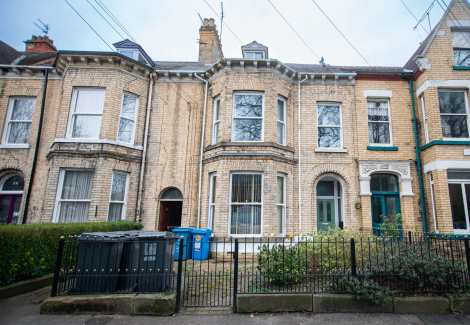
Recent News

7 ways to improve your EPC rating
20th Jan 2023
An EPC (Energy Performance Certificate) is essential if you plan on selling or renting your home in the UK. It gives your property an energy efficiency rating from A (very efficient) to G (inefficient) and will outline recommendations to improve it.
It’s worth noting that properties with higher EPC ratings are more appealing to buyers and renters as heating and lighting will cost them less.
The best place to start when you’re looking at improving your energy efficiency is your EPC. The tailored recommendations on there will show what would be most beneficial for your property but this blog will give you an idea of the sort of advice that might be included.
Book your EPC online to arrange for one of our fully-accredited assessors to visit your property and carry out an EPC.
Let’s dive in!
#1 Look into internal or external wall insulation
Given that a third of all heat lost in the home escapes through the walls, it’s no surprise that one of the most common recommendations on an EPC is to install wall insulation.
As a rough estimation, cavity wall insulation can save around £395 a year on your energy bills. Alternatively, solid wall insulation can typically save a whopping £540 a year.
#2 Consider floor insulation
A great deal of heat can escape through your floors so added insulation under the floorboards is likely to save you around £110 a year in an average property - or up to £180 a year in a detached house.
Quick fix: seal the gaps between your floors and skirting boards - it’s something you can do yourself with a standard tube of sealant from your local DIY store. It won’t cost a fortune and could help stop heat escaping.
#3 Invest in loft insulation
Most homes will have some sort of loft insulation, but it’s often not enough and a lot of heat can escape through your roof. Giving it a top up could help you save around £55 a year on your bills and it’s simple to install if you have good access to the space.
#4 Switch to low energy lighting
One of the quickest wins - upgrade your lighting by replacing traditional and halogen light bulbs with energy efficient LEDs. It’ll cost around £90 to do but should save you £65 a year so well worth it in the long run.
#5 Increase hot water cylinder insulation
If your hot water cylinder already has an insulating jacket around the tank, then check the thickness - it should be at least 80mm. If you upgrade from a jacket that’s 25mm thick to an 80mm thick one, you’re looking at a saving of around £70 a year.
A new hot water cylinder jacket only costs around £17 so be sure to upgrade or invest in one if your tank is currently jacketless!
#6 Switch single glazed windows for low-E double glazed windows
Another common EPC recommendation is making your windows more energy efficient. The cost to install double glazing can vary, but installing A-rated double glazing to windows in an entirely single-glazed semi-detached gas heated property, could save £195 a year.
#7 Consider solar panels
The most popular renewable energy source in the UK is solar panels, once installed they offer significant energy savings. They cost roughly £5,500 to install and return savings of around £325 a year. Over time you’ll see a return on your investment and your property will be appealing to future buyers / renters.
All stats and savings shared in this blog post have been collected through the Elmhurst website. Our Domestic Energy Assessors are all fully-accredited and regulated by Elmhurst.
Book your property in for an EPC to discover your rating and receive tailored recommendations on ways to improve it’s energy efficiency.



